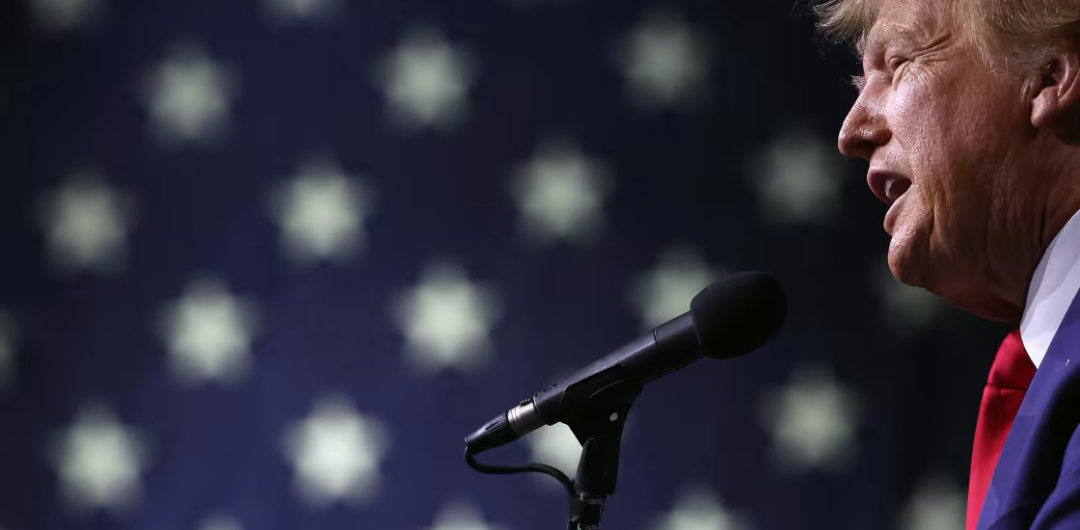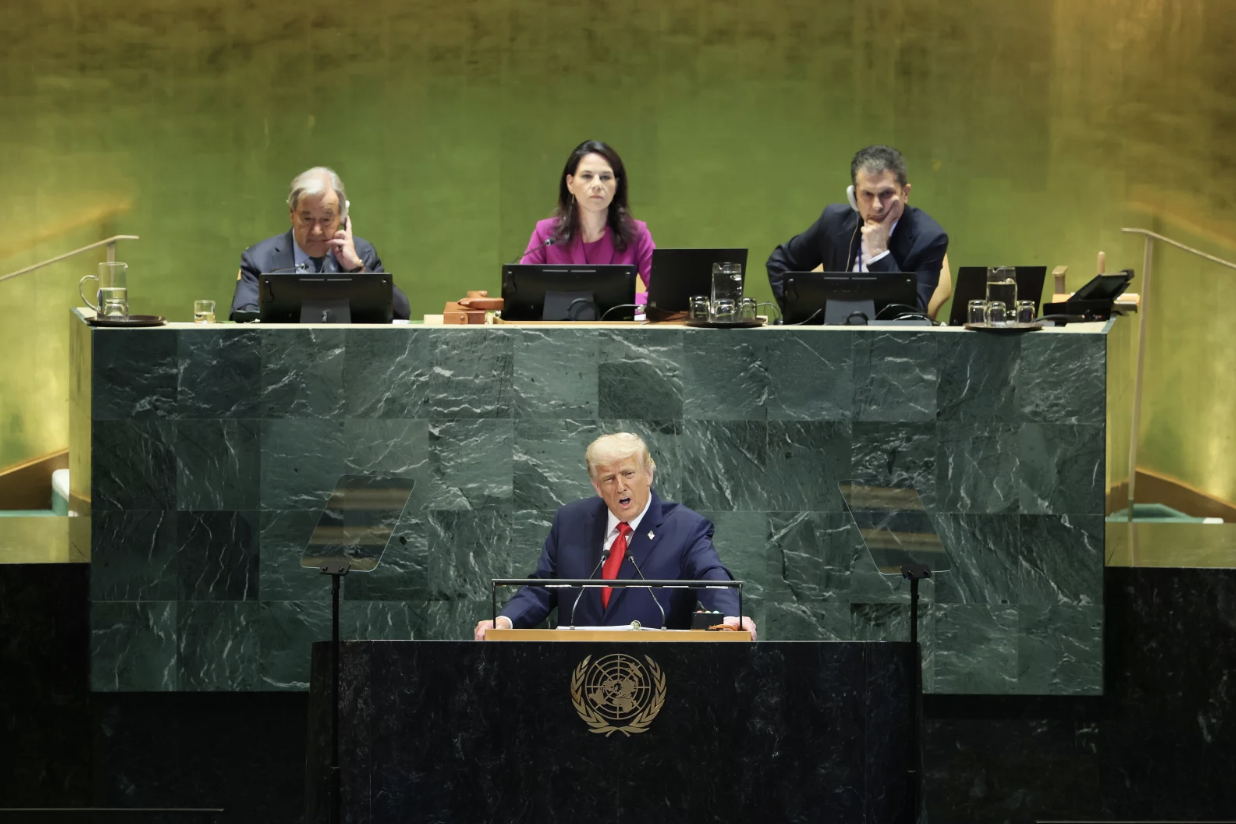United States President Donald J. Trump delivering his address at the United Nations General Assembly, September 23, 2025. Photo via Michael M. Santiago; Getty Images
***
“Both the immigration and their suicidal energy ideas—that will be the death of Western Europe if something is not done immediately… Proud nations must be allowed to protect their communities and prevent their societies from being overwhelmed by people they have never seen before with different customs, religions, with different everything,” stated United States President, Donald J. Trump, at the United Nations General Assembly on September 23, 2025.
During his address at the United Nations General Assembly, President Trump attacked the United Nations (UN) for “funding an assault on Western countries and their borders.” He accused the UN of spending thousands of dollars to aid migrants coming to the United States. Trump also told European leaders they only accept migrants because they “want to be politically correct,” and in doing so, are “destroying [their] heritage.” In addition to this, Trump accused the mayor of London, Sadiq Khan, of wanting to put London under Sharia law, then proceeded to say, “…you’re in a different country; you can’t do that.”
These statements made by President Trump at the General Assembly assert a nationalistic and anti-globalist belief against migration and cultural blending. Additionally, it suggests a belief that Western European and other historically white cultures are tarnished by this blending, and that they must stay “pure” and ethnically exclusive.
This is not the only example of eurocentricity and cultural purism from President Trump. During his visit to Buckingham Palace in September of 2025, Trump stated at a state dinner, “Together, we must defend the exceptional heritage that makes us who we are. And we must continue to stand for the values and the people of the English-speaking world. And we do indeed stand for that.” His emphasis on upholding Western European and “English-speaking” culture, and his anti-globalist remarks about migration, showcase Trump’s ethnically exclusive values.
Nationalistic and culturally exclusive rhetoric from President Trump is nothing new; however, he has seemed to increase it under his second presidency. This increase has been shown not only through his words, but also his actions.
In March of 2025, President Trump passed an executive order titled “Restoring Truth and Sanity to American History.” This executive order targets museums nationwide, and specifically names the Smithsonian Institution and the National Museum of African American History and Culture for their exhibitions on race and culture. It claims that there has been a movement amongst Americans to “rewrite history,” and that, “…our Nation’s unparalleled legacy of advancing liberty, individual rights, and human happiness [has been] reconstructed as inherently racist, sexist, oppressive, or otherwise irredeemably flawed.” Trump also stated in a Truth Social post that the Smithsonian places too much of an emphasis on “how bad slavery was” and not on America’s “brightness.”
Additionally, the Trump administration has ordered several national parks to remove exhibits on slavery, as well as the image The Scourged Back citing them as reflecting a “corrosive ideology.” Institutions have broadly interpreted this as anything to do with race, gender, class, or other “divisive” topics that have come under fire from the Trump administration.
Erasing slavery from our textbooks and museums does not make American history great. Those who do not know history are doomed to repeat it, and erasing it because it does not fit a certain narrative will only force the cycle to endlessly repeat itself. To say these exhibits contribute to a “corrosive ideology” only ignores and adds to the real divisive and socially-corroding issues we see today in America.

President Trump on the campaign trail in Reno, Nevada in December 2023. Photo via Justin Sullivan; Getty Images
***
Trump’s nationalist and exclusionary rhetoric throughout his second term should not come as a shock. His statements became noticeably more extreme during his 2024 campaign compared to his 2016 campaign. In 2023, Trump stated at both a New Hampshire rally and in a Truth Social post that immigrants are “poisoning the blood of our country.” He also vowed to bring back “patriotic education” to schools and promote the traditional nuclear family. It comes as no surprise that Trump’s actions under his second term are much more extreme.
Trump’s remarks regarding immigration and the preservation of historically white, English-speaking cultures displays cultural purism and anti-globalism. It also suggests that he seeks to continue to spread these ideals and implement more exclusionary policies in America. Additionally, his opposition to discussing slavery and other events throughout American history exhibits a desire to cleanse history of what does not fit into his nationalistic view of America and Eurocentric view of history.
This raises several questions: who does he believe is eligible to enjoy America’s benefits? Only white people of European descent? Only those who share his nationalistic views? Where does that leave the millions of Black, Latino, and Asian Americans? What lengths will Trump go to in order to preserve the nationalistic fantasy of a pure, white American culture?
We as a country are a cultural melting pot; without immigrants and diversity, much of “American” culture would not exist. We have worked to provide equality for all, regardless of one’s identity. The president is supposed to represent this diversity; that means all Americans, not just those who look like him and share his values.
President Trump’s exclusionary words and actions target a large American population. Staying silent and complacent only further hurts these communities and contributes to the social divide. There is no telling how much longer we will see the true and diverse American culture that makes America so great.
***
This article was edited by Zeynep Helva and Andrea Velez.
